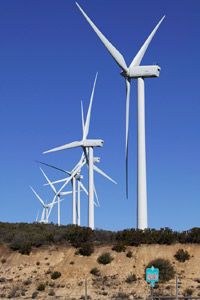Using hand-powered generators is pretty simple. Some travel gadgets actually have generators built in. For example, gadgets with built-in hand-powered generators that people commonly use on camping trips include a radio and a light that can be used for signaling if you need help. Both of these devices can run off of regular batteries most of the time, but if you're stranded with dead batteries, a hand crank on the side lets you power it up enough to tune in a weather report or use the light. You don't have to worry about connecting the generator to anything because it all works internally.
Other hand generators are made to be used with a specific device, such as a certain brand of cell phone. The generator is a small gadget with a hand crank. A special connector lets you hook it up to the phone. You simply turn the crank to start charging the phone's batteries. While the voltage generated will vary depending on how quickly you turn the crank, built-in voltage regulators will maintain a steady current. The longer you crank, the more power you generate. A few minutes of cranking is usually enough to make a quick emergency phone call.
Some hand-powered generators are more versatile. Instead of being designed to connect to one specific device, they have either electric leads, a cigarette lighter-type socket or a common electrical socket. You can then either wire or plug in any device to the generator to give it power. Not every device will work with a hand-powered generator -- only ones that draw the kind of current and voltage put out by the generator will work. Generators usually output direct current (DC) power, but some have internal power inverters that convert this to alternating current (AC) power. A hand generator typically can output up to 6 volts, although some have gearings that step up the cranking rate and can generate higher voltages.
If you're wondering if the idea of a hand-powered generator is new, it dates back at least to the 1960s. Military units used special hand generators that could fold up into a backpack. With a soldier turning the crank, the generator could be used to power electronic equipment while in the field, far from any available power source.
If you want to try a hand-powered generator for yourself, you can find them at many outdoor outfitters. They can also be purchased from education supply stores. These hand generators often come with clear housings, so you can see the coils and magnets in action.
Travel over to the next page for more information on hand-powered generators.



